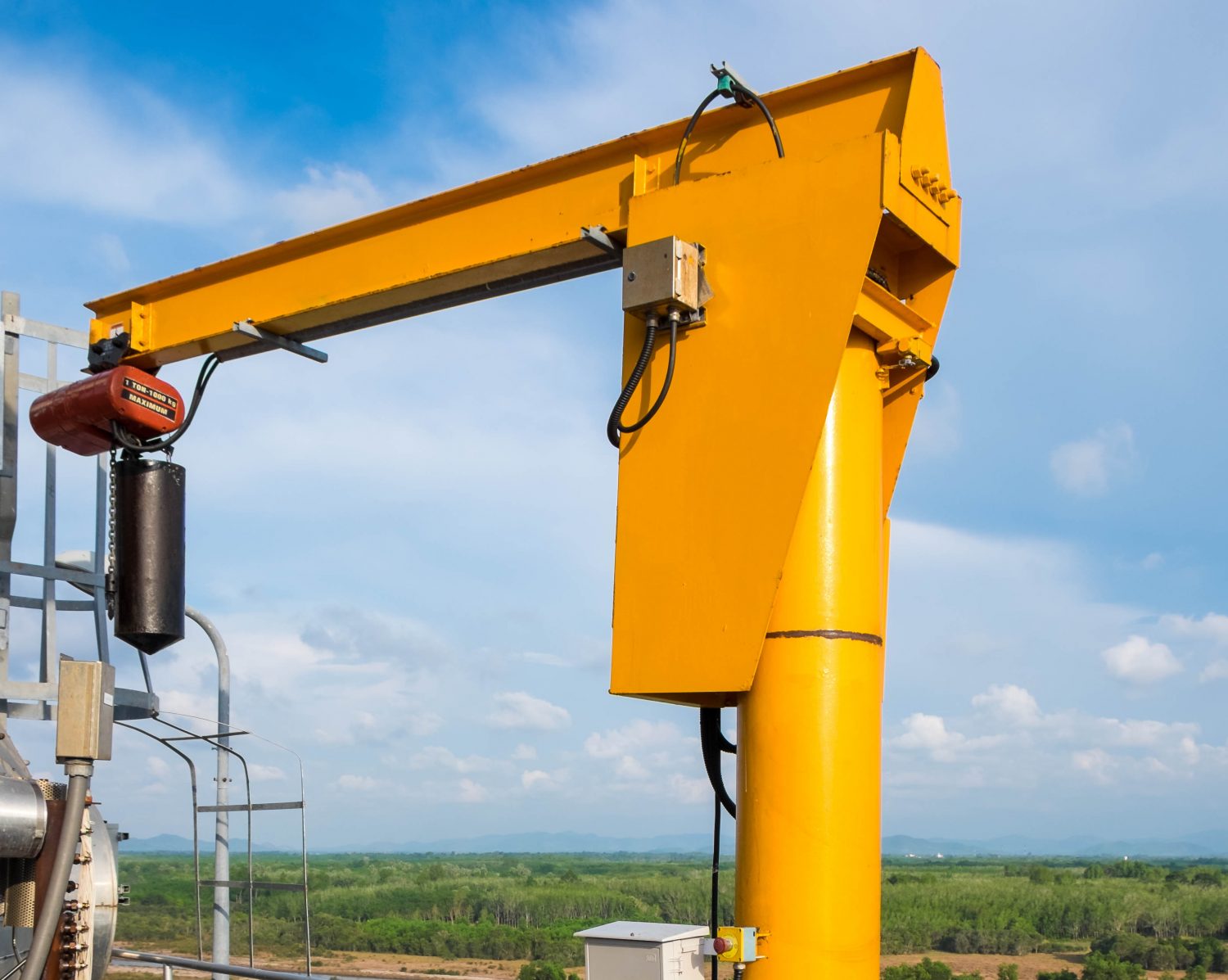Jib crane: What is it and how does it work?
03rd Apr

A jib crane is a device designed mainly for use in production operations as it features an arm/boom that extends out and away from the body (known as the mast or pillar) of the crane to lift heavy loads to heights that are unmanageable for workers. It is ideal for factories, warehouses, or other facilities where you are required to move heavy items around the space quickly and efficiently without risk of injury to the workers. Jib cranes can lift loads ranging from 250 pounds all the way up to 15 tonnes in some applications. Read on to learn more about jib these highly useful cranes.
How does a jib crane work?
The mast of the jib crane should always be attached to a solid surface like a wall or floor before you try and use it. This is because it needs to be strong and stable enough to support the weight of itself and the load it will be lifting. The jib arm or boom is then attached to the mast ready for use. There are multiple different types of crane which work in slightly different ways in order to suit various applications but generally, they will all follow the same style of approach and have the same goal.
A jib crane will have three motions that you can use: rotational is the direction the boom moves around the mast, transverse is the side-to-side movement of the hoist along the boom, and lift is of course moving the load up and down as needed.
If your crane requires manual operation, you can lift your goods using either a hoist, winch, or pulley system with a chain. On the other hand, if you have a powered jib crane there will be controls for you to simply activate the mechanics without any human involvement.
What are some examples of jib crane types?
A wall-mounted jib crane is best used in smaller areas where space is more limited. It attaches to the wall so it won’t take up any room on the floor and when it’s not being used it can be folded away along the wall neatly to prevent an unnecessary obstruction or any inefficiency in the production process. Wall mounted jib cranes are said to be some of the most economical in both cost and design and they can offer a useful solution for those struggling with heavy loads in restricted facilities. However, the drawback to this type of jib crane is that it won’t give you the full 360-degree rotation like other jib cranes would due to it being fitted to the wall, you can still achieve between 180 and 200 degrees though, so you’re not missing out on much.
This is the most common type of jib crane as it is highly adaptable, it can be installed practically anywhere and suit a wide range of indoor and outdoor applications. The most compelling benefits of freestanding jib cranes are their versatility, full 360-degree rotational range, an extended reach, and a high lifting capacity. However, these cranes tend to be the most expensive and given that you need a particular foundation in order to effectively attach and secure the crane, they are the most permanent as well in terms of setting them up. Freestanding jib cranes come in three designs base plate mounted, foundation mounted, and sleeve insert mounted.
Articulating jib cranes are a bit different to the standard ones as they have a swivel arm as well as a boom arm. They are easy to rotate and are very precise in positioning to reach loads that are blocked by obstructions or are located around tight corners or challenging spaces. The main boom arm will give you a range of 200 degrees whilst the secondary articulated arm provides the entire 360-degree rotation, meaning it can easily reach into containers and machinery.
The several configuration options on articulating jib cranes mean they are a good choice for more difficult or awkward lifts where it could be harder to successfully manoeuvre a normal jib crane. For more regular use and heavier duty lifts though, an articulating jib crane may not be the right option as they are not optimally designed for increased capacity loads.
Mast-type jib cranes offer an alternative solution to freestanding cranes as they don’t require a specific foundation to be anchored to. They are supported on the floor but stabilised by the beams or other structures in the ceiling of the building, which also means they don’t demand as much floor space as freestanding jib cranes.
Mast-type jib cranes comes in two designs full cantilever and drop cantilever. Despite being a more cost-effective option compared to freestanding jib cranes, they do depend on the building you’re in having a stable overhead beam or support structure, which is an important consideration when choosing the right jib crane for you.
These are just a few examples, there are a range of jib crane designs that fit with many uses and applications.
Looking for high quality engineers to create your bespoke fabrication project?
The team at FEM can help. We’re a family-run business of experienced and skilled fabricators who can tailor-make metal fabrication products and structures to suit a wide range of industries and requirements. Contact us today to discuss your needs and how our specialist fabrication services can help.